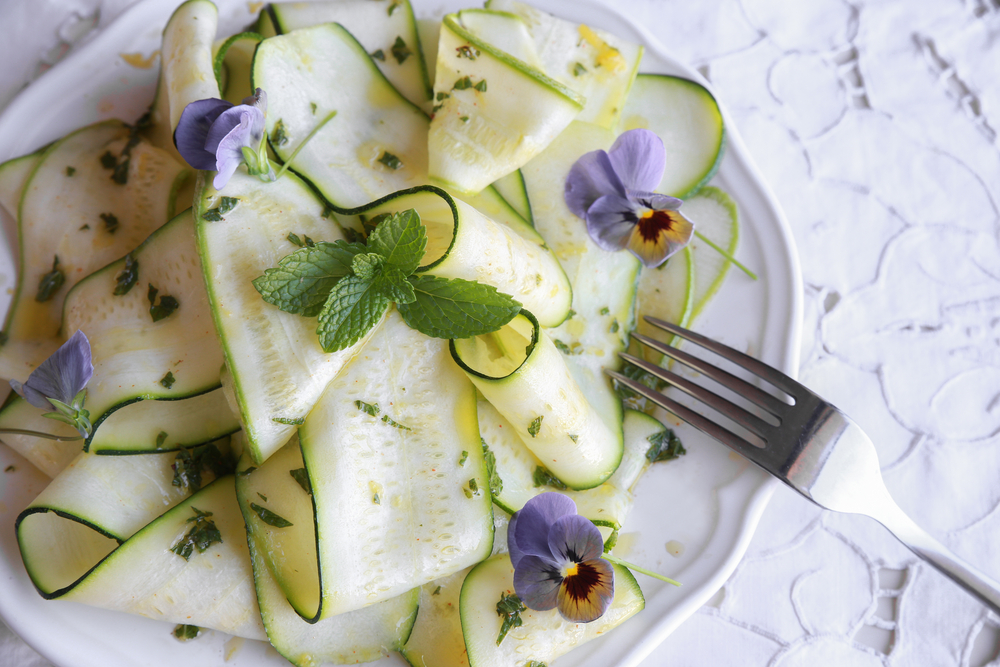
You’ve likely heard of or been to restaurants who serve edible flowers with their meals, whether they are part of a main dish or simply a garnish. Flowers have been used for thousands of years by cultures around the world, the most notable being the, Chinese, French, Greeks and Romans. While downhome American comfort food dishes stand alone, using flowers is part of traditional cooking for a few other cultures; Italians use squash blossoms, for example.
In America only haute cuisine, a French term which translates to “high cooking”, adds color and additional flavor to foods, and there are prodigious varieties of edible flowers. Just a note, don’t attempt to harvest flowers for eating from unfamiliar sources such as public parks or roadsides. These are frequently treated with pesticides or polluted with car exhaust. If you are allergic to pollen, it’s best to add flowers to your diet gradually, and it’s very important to know what part of the flower is edible.
Here is an introduction to a few edible flowers that not only dress up your plate, but offer zing to your favorite foods:
Allium
Seasonings in this genus belong in the family with onions, including chives, garlic and leeks. Leeks give you a more delicate spice unless you want to crank it all the way up to garlic levels.
Angelica
Having a licorice-like flavor, these lavender and deep rose-colored flowers can be used in some deserts and extracts can be used in candies.
Arugula
Most commonly found in spring mixes for salads, the leaves of the plant have a peppery flavor and range in color from white to yellow with dark purple streaks.
Basil
The familiar basil leaf is commonly used in pasta sauces and some Thai dishes, but the blossoms can be enjoyed, too! They come in colors such as white, pink or lavender and their flavor is similar to the leaves, just milder.
Bee balm
Surprisingly, this plant does more than attract bees! When the red flowers boom, they offer a minty flavor that can be added to many complimentary flavors.
Hollyhock
These can be a real prize to show in your yard, but they really don’t off much flavor. However, the flowers are edible, offering color to your dishes and a light vegetal flavor.
Jasmine
You may be more familiar with using these fragrant blooms for tea, but they can added to a few sweet dishes in light doses.
Squash and pumpkin
Blossoms from both have a slight squash flavor and can be stuffed with various ingredients.
Sunflower
With their delightful, sunny yellow petals these are sure to brighten any breakfast plate! The petals can be eaten, and the bud can be steamed like an artichoke.
Violets
Another famous edible flower, violets are floral, sweet and beautiful as garnishes. Use the flowers in salads and to garnish desserts and drinks.
Enjoy flowery haute cuisine right in your own kitchen! If you are interested in exploring the tastes of edible flowers, talk to me about what I can improvise to please you palate! Email me at maggie@tucsonchefmaggie.com or call me at 520 971 8422

